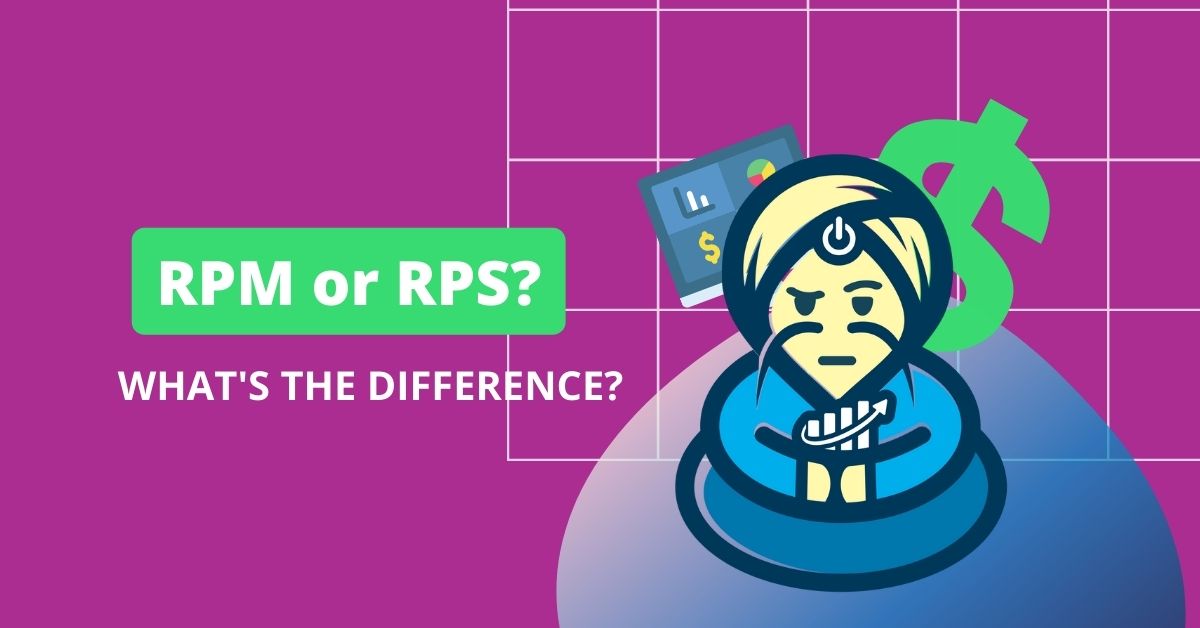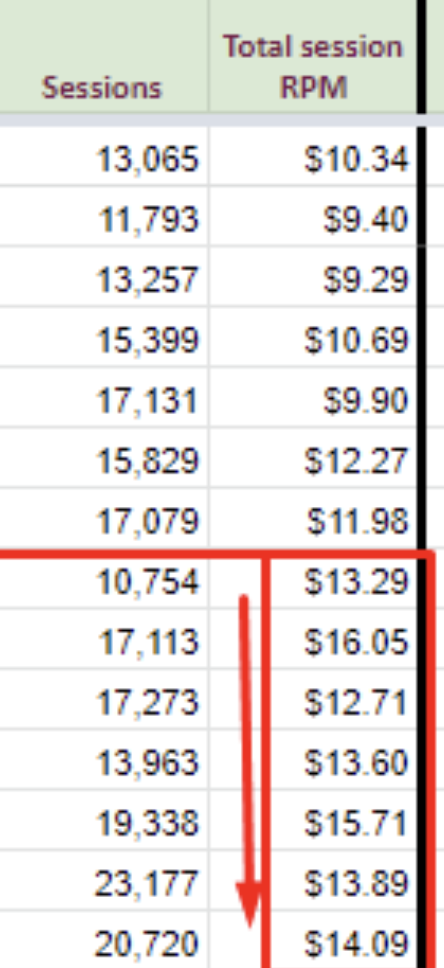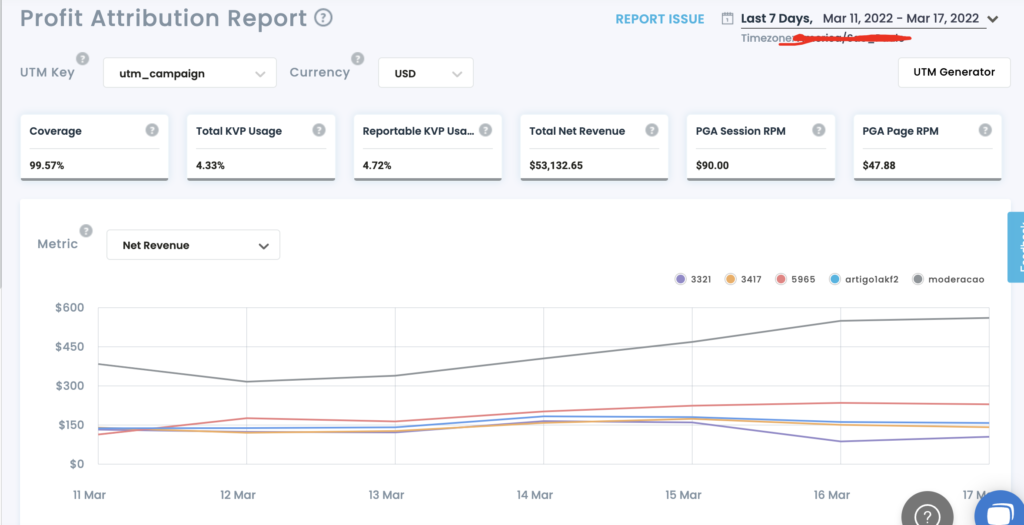
This post was most recently updated on March 11th, 2025
If you’re a publisher, you may be wondering which metric is more important to track: revenue per mille (RPM) or revenue per session (RPS)? Well, wonder no more! As publishers look for ways to understand how their ad inventory is performing, RPM and RPS are two very valuable metrics. In this blog post, we’ll break down the difference between revenue per mile and revenue per session for publishers and give you some tips on how to increase the latter. Stay tuned – it’s about to get nerdy up in here!
Calculation: (Total Revenue / Total Ad Impressions) * 1000
Calculation: Total Revenue / Total Sessions
Calculation: (Total Revenue / Total Ad Impressions) * 1000
Calculation: (Total Revenue / Total Pageviews) * 1000
Calculation: (Total Revenue / Total Sessions) * 1000
Related Read: https://www.monetizemore.com/blog/what-is-rpm-session-page-ad/
While the acronyms are similar, RPM and RPS represent different ways of looking at your earnings. By understanding the difference between RPM and RPS, you can choose the right metric to track and optimize your monetization strategy effectively.
RPMs focus on earnings per thousand ad impressions. It’s all about how much money you make for every 1000 times an ad is displayed. RPM is a good indicator of the effectiveness of your ad units and the value of your ad inventory. A higher RPM means your ads are generating more revenue per impression.
RPS focused on earnings per user session. It tracks how much revenue you generate on average for each visit or session within your app. RPS provides a more holistic view of your monetization strategy by considering the entire user experience. It encourages you to optimize the entire session, not just individual ad impressions.
RPS encourages you to focus on the overall user experience and how to maximize revenue from each user, not just on displaying as many ads as possible. RPS also offers:

Both RPM and Session RPM are essential metrics for understanding and optimizing your app’s monetization performance. While RPM focuses on the efficiency of your ads themselves, Session RPM provides a broader perspective by considering the overall revenue generated per user session.
They both provide insights into how well your app is generating revenue, though they focus on different aspects:

Improving Session RPMs requires a holistic approach that focuses on maximizing revenue from each user session while maintaining a positive user experience. Here’s what you can do:
Always keep yourself updated on RPM and RPS trends. If you’re already partnered with MonetizeMore, you can analyze these metrics in the Profit Attribution Report. RPM and session RPMs are the snapshot to your daily ad inventory performance. If you haven’t signed up for Pubguru Header Bidding yet, you are missing out on taking your ad revenue to the moon.
The page RPM is the rate an advertiser must pay for every thousand ad impressions viewed per page and is calculated by dividing your estimated ad earnings by total number of pageviews with the result multiplied by 1,000.
No, RPS and Session RPM are not the same. While they both measure revenue per session, Session RPM multiplies the result by 1000, similar to RPM and eCPM.
Session RPM shows the site’s ad earnings per visitor and gives you a snapshot of overall site performance.You can calculate session RPM by dividing your earnings by total user sessions multiplied by 1,000.

With over ten years at the forefront of programmatic advertising, Aleesha Jacob is a renowned Ad-Tech expert, blending innovative strategies with cutting-edge technology. Her insights have reshaped programmatic advertising, leading to groundbreaking campaigns and 10X ROI increases for publishers and global brands. She believes in setting new standards in dynamic ad targeting and optimization.
10X your ad revenue with our award-winning solutions.